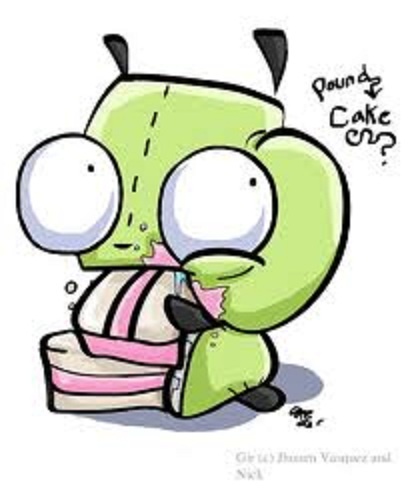
Welcome to Planet Irk how may we help you
|
| | | The Dreamtime of Aborigines |  |
| | | Author | Message |
|---|
Invader Zim
Emperor


Posts : 1252
Join date : 2009-09-15
Age : 28
Location : Somewhere in the United States
Characters
Name: Invader Zim
Desc.:
specices: Irken
 |  Subject: The Dreamtime of Aborigines Subject: The Dreamtime of Aborigines  Tue May 25, 2010 7:04 pm Tue May 25, 2010 7:04 pm | |
| To those who don't know who the aborigines they are a group of people from Australia divided into peacful sub-tribes known as Aranda tribe, Binbinga tribe, Gunwinggu folk, Juma tribe, Kabikabi tribe, Kamilaroi tribe, Karadjeri tribe, Karraur tribe, Kulin people, Mandjindja folk, Murinbata folk, Murngin people, Nambutji tribe, Wallamba tribe, Wiradyuri tribe, Wulumba tribe, and Wurunjerri people. They the reasearchers say that "Aboriginals believe in two forms of time; two parallel streams of activity. One is the daily objective activity, the other is an infinite spiritual cycle called the 'dreamtime', more real than reality itself. Whatever happens in the dreamtime establishes the values, symbols, and laws of Aboriginal society. It was believed that some people of unusual spiritual powers had contact with the dreamtime." The Dreaming of the Aboriginal times
"Dreaming" is also often used to refer to an individual's or group's set of beliefs or spirituality. For instance, an indigenous Australian might say that he or she has Kangaroo Dreaming, or Shark Dreaming, or Honey Ant Dreaming, or any combination of Dreamings pertinent to their "country". Many Indigenous Australians also refer to the Creation time as "The Dreaming". The Dreamtime laid down the patterns of life for the Aboriginal people.[1]
Dreaming stories vary throughout Australia, with variations on the same theme. For example, the story of how the birds got their colours is different in New South Wales and in Western Australia[citation needed]. Stories cover many themes and topics, as there are stories about creation of sacred places, land, people, animals and plants, law and custom. It is a complex network of knowledge, faith, and practices that derive from stories of creation. It pervades and informs all spiritual and physical aspects of an indigenous Australian's life.
They believe that every person essentially exists eternally in the Dreaming. This eternal part existed before the life of the individual begins, and continues to exist when the life of the individual ends. Both before and after life, it is believed that this spirit-child exists in the Dreaming and is only initiated into life by being born through a mother. The spirit of the child is culturally understood to enter the developing foetus during the fifth month of pregnancy.[2]. When the mother felt the child move in the womb for the first time, it was thought that this was the work of the spirit of the land in which the mother then stood. Upon birth, the child is considered to be a special custodian of that part of his country and is taught the stories and songlines of that place. As Wolf (1994: p.14) states: "A black 'fella' may regard his totem or the place from which his spirit came as his Dreaming. He may also regard tribal law as his Dreaming." [3]
It was believed that, before humans, animals, and plants came into being, their 'souls' existed; they knew they would become physical, but not then. When that time came, all but one of the 'souls' became plants or animals, with the last one becoming human and acting as a custodian or guardian to the natural world around them.
Traditional Australian indigenous peoples embrace all phenomena and life as part of a vast and complex system-reticulum of relationships which can be traced directly back to the ancestral Totemic Spirit Beings of The Dreaming. This structure of relations, including food taboos, had the result of maintaining the biological diversity of the indigenous environment. It may have helped prevent overhunting of particular species.[citation needed]
[edit] The Dreaming, Tribal Law, and Songlines
The Dreaming establishes the structures of society, rules for social behaviour, and the ceremonies performed to ensure continuity of life and land. The Dreaming governs the laws of community, cultural lore and how people are required to behave in their communities. The condition that is The Dreaming is met when people live according to law, and live the lore: perpetuating initiations and Dreaming transmissions or lineages, singing the songs, dancing the dances, telling the stories, painting the Songlines and Dreamings.
The Creation was believed to be the work of culture heroes who travelled across a formless land, creating sacred sites and significant places of interest in their travels. In this way songlines were established, some of which could travel right across Australia, through as many as six to ten different language groupings. The songs and dances of a particular songline were kept alive and frequently performed at large gatherings, organised in good seasons.
In the Aboriginal world view, every event leaves a record in the land. Everything in the natural world is a result of the actions of the archetypal beings, whose actions created the world. Whilst Europeans consider these cultural ancestors to be mythical, many Aboriginal people believe in their literal existence. The meaning and significance of particular places and creatures is wedded to their origin in the Dreaming, and certain places have a particular potency, which the Aborigines call its dreaming. In this dreaming resides the sacredness of the earth. For example, in Perth, the Noongar believe that the Darling Scarp is said to represent the body of a Wagyl – a serpent being that meandered over the land creating rivers, waterways and lakes. It is taught that the Wagyl created the Swan River. In another example, the Gagudju people of Arnhemland, for which Kakadu National Park is named, believe that the sandstone escarpment that dominates the park's landscape was created in the Dreamtime when Ginga (the crocodile-man) was badly burned during a ceremony and jumped into the water to save himself. He turned to stone and became the escarpment. The common theme in these examples and similar ones is that topographical features are either the physical embodiments of creator beings or are the results of their activity.
In one version (there are many Aboriginal cultures), Altjira was the god of the Dreamtime; he created the Earth and then retired as the Dreamtime vanished. Alternative names for Altjira in other Australian languages include Alchera (Arrernte), Alcheringa, Mura-mura (Dieri), and Tjukurpa (Pitjantjatjara).
The dreaming and travelling trails of the Spirit Beings are the songlines (or "Yiri" in the Warlpiri language). The signs of the Spirit Beings may be of spiritual essence, physical remains such as petrosomatoglyphs of body impressions or footprints, amongst natural and elemental simulacrae. To cite an example, the Yarralin people of the Victoria River Valley venerate the spirit Walujapi as the Dreaming Spirit of the black-headed python. Walujapi carved a snakelike track along a cliff-face and left an impression of her buttocks when she sat establishing camp. Both these dreaming signs are still discernible. | |
|   | | Invader Zim
Emperor


Posts : 1252
Join date : 2009-09-15
Age : 28
Location : Somewhere in the United States
Characters
Name: Invader Zim
Desc.:
specices: Irken
 |  Subject: Re: The Dreamtime of Aborigines Subject: Re: The Dreamtime of Aborigines  Tue May 25, 2010 7:08 pm Tue May 25, 2010 7:08 pm | |
| Wondjina 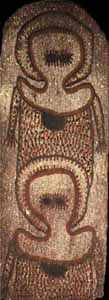 I wounder if they are aliens. In Aboriginal mythology, the Wondjina (or Wandjina) were cloud and rain spirits who, during the Dream time, created or influenced the landscape and its inhabitants.[1] When they found the place they would die, they painted their images on cave walls and entered a nearby waterhole. Today, certain Aboriginal people of the Mowanjum tribes repaint the images to ensure the continuity of the Wondjina's presence.[2] Annual repainting in December or January also ensures the arrival of the monsoon rains, according to Mowanjum belief.[3] Repainting has occurred so often that at one site the paint is over 40 layers deep. The painting style evolves during this process: the figures of recent years are stockier and some now possess eyelashes.[4] The Wondjina paintings have common colors of black, red and yellow on a white background. They appear alone or in groups, vertically or horizontally depending on the dimensions of the rock, and can be depicted with figures and objects like the Rainbow Serpent or yams. Common composition is with large upper bodies and heads that show eyes and nose, but typically no mouth. Two explanations have been given for this: they are so powerful they do not require speech[5] and if they had mouths, the rain would never cease. Around the heads of Wondjina are lines or blocks of color, depicting lightning, clouds or rain. The Wondjina can punish those who break the law with floods, lightning and cyclones.[6] The paintings are still believed to possess these powers and therefore are to be approached and treated respectfully. Each site and painting has a name. In Aboriginal mythology, the Wondjina (or wandjina) were cloud and rain spirits who, during the Dream time, painted their images (as humans but without mouths) on cave walls. It has been said if they had mouths, the rain would never cease. They also lacked limbs and had a skull-like face. Their ghosts still exist in small ponds. Walaganda, one of the Wondjina, became the Milky Way. Paintings of this style that represent the mythological beings involved in the creation of the world are called "Wondjina style". The Wandjinas have common colors of black, red and yellow on a white background. Wandjinas are believed to have made the sea, the earth and all its inhabitants. The existing rock art found, has depicted them as having huge upper bodies and large heads. Their faces show eyes and nose, but typically lack mouths. Around the heads of Wandjinas there appears to be lightning and feathers. The Wandjina is thought to have special powers and if offended, can cause flooding and intense lightning. The paintings are still believed to have special powers and therefore are to be approached cautiously. In 2007, graffiti depictions of Wandjina appeared in Perth, Western Australia. Styles ranged from stencil-work to a spray painted Wondjina driving a pink car. Using flickr and blogs, several people engaged in 'Wondjina watching', documenting the Wondjina graffiti they found.[7] These 'wandering Wondjina' angered and upset Aboriginals who said that only certain of their people are permitted to depict the Wondjina.[ | |
|   | | Invader Zim
Emperor


Posts : 1252
Join date : 2009-09-15
Age : 28
Location : Somewhere in the United States
Characters
Name: Invader Zim
Desc.:
specices: Irken
 |  Subject: Re: The Dreamtime of Aborigines Subject: Re: The Dreamtime of Aborigines  Tue May 25, 2010 7:13 pm Tue May 25, 2010 7:13 pm | |
| WALLUNGUNDER 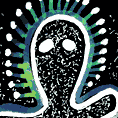 The enterprising Big Chief of the WANDJINA Gods Consortium. They say he is keeper of Space and Time they say he is currently asleep WALLUNGUNDER, the big boss WANDJINA, came down from the Milky Way during DREAMTIME and created the earth and all its inhabitants. ... His people from the Milky Way were so powerful that they didn't need to speak. So they didn't bother to have mouths. They were definite good guys, and are still worshipped and respected Top Gods to this day. | |
|   | | Invader Zim
Emperor


Posts : 1252
Join date : 2009-09-15
Age : 28
Location : Somewhere in the United States
Characters
Name: Invader Zim
Desc.:
specices: Irken
 |  Subject: Re: The Dreamtime of Aborigines Subject: Re: The Dreamtime of Aborigines  Tue May 25, 2010 7:17 pm Tue May 25, 2010 7:17 pm | |
| The Rainbow Serpent  The Rainbow Serpent is a common motif in the art & mythology of Aboriginal Australia. It is named for the snake-like meandering of water across a landscape, and the color spectrum caused when sunlight strikes water at an appropriate angle relative to the observer. (this makes the water a rainbow) The Rainbow Serpent is seen as the inhabitant of permanent waterholes and is in control of life's most precious resource, water. He is the underlying Aboriginal mythology for the famous Outback "bunyip". He is the sometimes unpredictable Rainbow Serpent, who vies with the ever-reliable Sun, that replenishes the stores of water, forming gullies and deep channels as he slithered across the landscape, allowing for the collection and distribution of water. Dreamtime stories tell of the great Spirits during creation, in animal and human form they molded the barren and featureless earth. The Rainbow Serpent came from beneath the ground and created huge ridges, mountains and gorges as it pushed upward. The Rainbow Serpent is known as Ngalyod by the Gunwinggu and Borlung by the Miali. He is a serpent of immense proportions which inhabits deep permanent waterholes.[1] Serpent stories vary according to environmental differences. Tribes of the monsoonal areas depict an epic interaction of the Sun, Serpent and wind in their Dreamtime stories, whereas tribes of the central desert experience less drastic seasonal shifts and their stories reflect this. It is known both as a benevolent protector of its people (the groups from the country around) and as a malevolent punisher of law breakers. The rainbow serpent's mythology is closely linked to land, water, life, social relationships and fertility. There are innumerable names and stories associated with the serpent, all of which communicate the significance and power of this being within Aboriginal traditions. The myth of the Rainbow serpent is sometimes associated with Wonambi naracoortensis, a large snake of the now extinct megafauna of Australia.
Last edited by Invader Zim on Wed May 26, 2010 3:35 pm; edited 2 times in total | |
|   | | Invader Zim
Emperor


Posts : 1252
Join date : 2009-09-15
Age : 28
Location : Somewhere in the United States
Characters
Name: Invader Zim
Desc.:
specices: Irken
 |  Subject: Re: The Dreamtime of Aborigines Subject: Re: The Dreamtime of Aborigines  Tue May 25, 2010 7:20 pm Tue May 25, 2010 7:20 pm | |
| KULTANA 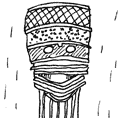 KULTANA is the God of the Dead from Arnhem Land. He greets your spirit as it departs from the world of mortality, and welcomes you to your death. KULTANA also does North Wind and Rain, both very popular items, and his effigies represent falling rain. Does it rain in the afterlife? | |
|   | | Invader Zim
Emperor


Posts : 1252
Join date : 2009-09-15
Age : 28
Location : Somewhere in the United States
Characters
Name: Invader Zim
Desc.:
specices: Irken
 |  Subject: Re: The Dreamtime of Aborigines Subject: Re: The Dreamtime of Aborigines  Tue May 25, 2010 7:22 pm Tue May 25, 2010 7:22 pm | |
| Mimi  Mimis are fairy-like beings of Arnhem Land in the folklore of the Indigenous Australians of northern Australia. They are described as having extremely thin and elongated bodies, so thin as to be in danger of breaking in case of a high wind. To avoid this, they usually spend most of their time living in rock crevices. They are said to have taught the Aborigines of Australia how to hunt, prepare kangaroo meat and use fire. They are like humans but they live in a different dimension. They were depicted during the freshwater period (1200 kya). | |
|   | | Invader Zim
Emperor


Posts : 1252
Join date : 2009-09-15
Age : 28
Location : Somewhere in the United States
Characters
Name: Invader Zim
Desc.:
specices: Irken
 |  Subject: Re: The Dreamtime of Aborigines Subject: Re: The Dreamtime of Aborigines  Tue May 25, 2010 7:24 pm Tue May 25, 2010 7:24 pm | |
| Australian Aboriginal astronomy
Australian Aboriginal astronomy is a name given to the parts of indigenous Australian culture relating to astronomical subjects — such as the Sun and Moon, the stars, planets, and the Milky Way, and their motions on the sky. Because the Australian Aboriginal culture is the oldest continuous culture in the world, it has been claimed [1] that the Australian Aboriginal people may be the world's first astronomers.
Some Aboriginal groups use the motions of celestial bodies for calendar purposes. Many attribute religious or mythological meanings to celestial bodies and phenomena. There is a diversity of astronomical traditions in Australia, each with its own particular expression of cosmology. However, there appear to be common themes and systems between the groups.
Interpreting the sky
[edit] The Emu in the Sky
The Aboriginal "Emu in the sky". In Western astronomy terms, the Southern Cross is on the right, and Scorpius on the left; the head of the emu is the Coalsack.A tradition that is widespread in Australia is that of the "Emu in the Sky", a 'constellation' that is defined by dark nebulas (opaque clouds of dust and gas in outer space) that are visible against the milky way background, rather than by stars. The Emu's head is the very dark Coalsack nebula, next to the Southern Cross; the body and legs are other dark clouds trailing out along the Milky Way to Scorpius.
Just North of Sydney, in the Kuringai National Park, are extensive rock engravings of the Guringai people who live there, including representations of the creator-hero Daramulan and his emu-wife. An engraving near the Elvina Track[2] shows an emu in the same pose and orientation as the Emu in the Sky. constellation. On autumn evenings, the emu in the sky stands directly over her portrait, just at the time when it's time to gather emu eggs.
To the Wardaman, however, the Coalsack is the head of a lawman.[3]
[edit] The Canoe in Orion
The Yolngu people of northern Australia say that the constellation of Orion, which they call Julpan, is a canoe. They tell the story of three brothers who went fishing, and one of them ate a fish that was forbidden under their law. Seeing this, the Sun carried the three brothers and their canoe up into the sky. The three stars in the constellation's centre, which form Orion's Belt in Western mythology, are the three brothers; the Orion Nebula above them is the forbidden fish; and the bright stars Betelgeuse and Rigel are the bow and stern of the canoe. This is an example of astronomical legends underpinning the ethical and social codes that people how to live on Earth.[4]
[edit] The Pleiades
The Pleiades also figures in the Dreamings of several language groups. For example, in the central desert region, they are said to be seven sisters fleeing from the unwelcome attentions of a man represented by some of the stars in Orion. The close resemblance of this to Greek mythology is believed to be coincidental - there is no evidence of any cultural connection.[4]
[edit] Milky Way and other stars
When Yolngu people die, they are taken by a mystical canoe, Larrpan, to the spirit-island Baralku in the sky, where you can see their camp-fires burning along the edge of the great river of the Milky Way. The canoe is sent back to earth as a shooting star, letting their family on Earth know that they have arrived safely in the spirit-land.[4]
The Boorong people see in the Southern Cross a possum in a tree.[4]
[edit] Sun and Moon
Many traditions have stories of a female Sun and a male Moon.
The Yolngu say that Walu, the Sun-woman, lights a small fire each morning, which we see as the dawn.[5] She paints herself with red ochre, some of which spills onto the clouds, creating the sunrise. She then lights a torch and carries it across the sky from east to west, creating daylight. At the end of her journey, as she descends from the sky, some of her ochre paints again rubs off onto the clouds, creating the sunset. She then puts out her torch, and throughout the night travels underground back to her starting camp in the east.[4]
The Yolngu tell that Ngalindi, the Moon-man, was once young and slim (the waxing Moon), but grew fat and lazy (the full Moon). His wives chopped bits off him with their axes (the waning Moon); to escape them he climbed a tall tree towards the Sun, but died from the wounds (the new Moon). After remaining dead for three days, he rose again to repeat the cycle, and continues doing so till this day.[4] The Kuwema people in the Northern Territory say that he grows fat at each full Moon by devouring the spirits of those who disobey the tribal laws.[4][5][6]
The Yolngu also associated the Moon with the tides.[4]
[edit] Eclipses
The Warlpiri people explain a solar eclipse as being the Sun-woman being hidden by the Moon-man as he makes love to her.[4] This explanation is shared by other groups, such as the Wirangu.[7] On the other hand, a lunar eclipse is caused when the Moon-man is pursued and threatened by the Sun-woman.[4][8]
In the Kuringai National Park there are a number of engravings showing a crescent shape, with sharp horns pointing down, and below it a drawing of a man in front of a woman. While the crescent shape has been assumed by most researchers to represent a boomerang, some argue that it is more easily interpreted as a solar eclipse, with the mythical man-and-woman explanation depicted below it.[4]
[edit] Venus
The rising of Venus marks an important ceremony of the Yolngu, who call it Barnumbirr ("Morning Star") They gather after sunset to await the rising of the planet. As she approaches, in the early hours before dawn, the Yolngu say that she draws behind her a rope of light attached to the island of Baralku on Earth, and along this rope, with the aid of a richly decorated "Morning Star Pole", the people are able to communicate with their dead loved ones, showing that they still love and remember them.[4]
[edit] Astronomical calendars
Aboriginal calendars tend to be more complex than European calendars. Many groups in northern Australia use a calendar with six seasons, and some groups mark the seasons by the stars which are visible during them.[4] For the Pitjantjatjara, for example, the rising of the Pleiades at dawn (in May) marks the start of winter.[4][9]
Many stories exist where the heliacal rising or setting of stars or constellations are used to tell Aboriginal Australians when it's time to move to a new place and/or look for a new food source.[4]
The Boorong people in Victoria know that when the Malleefowl constellation (Lyra) disappears in October, to "sit with the Sun", it's time to start gathering her eggs on Earth. Other groups know that when Orion first appears in the sky, the Dingo puppies are about to be born.[4] When Scorpius appears, the Yolngu know that the Macassan fisherman would soon arrive to fish for trepang.[4]
It is not known to what extent Aboriginal people were interested in the precise motion of the Sun, Moon, planets or stars. However, it has been suggested that some of the stone arrangements in Victoria may have been used to track the equinoxes and/or solstices. There are also rock engravings by the Nganguraku people at Ngaut Ngaut which, according to oral tradition, represent lunar cycles. Unfortunately, most of the Nganguraku culture (including their language) has been lost because of repression by Christian missionaries over a hundred years ago.[4] | |
|   | | Invader Zim
Emperor


Posts : 1252
Join date : 2009-09-15
Age : 28
Location : Somewhere in the United States
Characters
Name: Invader Zim
Desc.:
specices: Irken
 |  Subject: Re: The Dreamtime of Aborigines Subject: Re: The Dreamtime of Aborigines  Tue May 25, 2010 7:26 pm Tue May 25, 2010 7:26 pm | |
| Gnowee 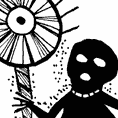 In Australian aboriginal mythology, Gnowee is a solar goddess who lived on Earth before there was a sun.[1] People had to carry torches or other light sources to see. Gnowee's baby son wandered off while she was gathering yams, and she began searching for him, carrying a large torch. So that she could see further, she climbed into the sky. Every day, she still searches for her son, and her torch is the sun. | |
|   | | Invader Zim
Emperor


Posts : 1252
Join date : 2009-09-15
Age : 28
Location : Somewhere in the United States
Characters
Name: Invader Zim
Desc.:
specices: Irken
 |  Subject: Re: The Dreamtime of Aborigines Subject: Re: The Dreamtime of Aborigines  Tue May 25, 2010 7:29 pm Tue May 25, 2010 7:29 pm | |
| LUNGKATA. 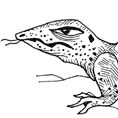 The Dirty cheating Lizard Man of Ayer's Rock. He had a blue tongue and a sneaky stealing temperament. Together with fellow lizard creature MITA, he used to lie in wait for hunters and steal their prey, being too much of a lazy lizard to go hunting himself. One day, the BELL-BIRD-BROTHERS were chasing an emu (which was something of a national sport at the time) and the two blue-tongued lizards diverted it into their lair. When the hunters turned up, out of breath and starving, LUNGKATA and MITA had scoffed the lot and could only offer emu left-overs. The BELL-BIRD-BROTHERS were outraged at this thievery and set fire to the lair. The lizards, not being used to exercise, were unable to escape and turned into burnt boulders which stand there to this day. Which just goes to show that you shouldn't trust anyone with a blue tongue. | |
|   | | Invader Zim
Emperor


Posts : 1252
Join date : 2009-09-15
Age : 28
Location : Somewhere in the United States
Characters
Name: Invader Zim
Desc.:
specices: Irken
 |  Subject: Re: The Dreamtime of Aborigines Subject: Re: The Dreamtime of Aborigines  Tue May 25, 2010 7:31 pm Tue May 25, 2010 7:31 pm | |
| Mita 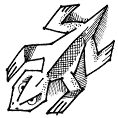 One of the blue-tongued Lizard Men of Ayer's Rock. He appears to be a nasty thieving schemer. See the entry on his brother | |
|   | | Invader Zim
Emperor


Posts : 1252
Join date : 2009-09-15
Age : 28
Location : Somewhere in the United States
Characters
Name: Invader Zim
Desc.:
specices: Irken
 |  Subject: Re: The Dreamtime of Aborigines Subject: Re: The Dreamtime of Aborigines  Wed May 26, 2010 2:50 pm Wed May 26, 2010 2:50 pm | |
| Yara-ma-yha-who
The Yara-ma-yha-who is a creature from Australian Aboriginal folklore. This creature resembles a little red man with a very big head and large mouth with no teeth. On the ends of its hands and feet are suckers. It lives in fig trees and does not hunt for food, but waits until an unsuspecting traveler rests under the tree, then catches the victim and drains their blood using the suckers on its hands and feet, making them weak. It later comes back and consumes the person, drinks some water, and then takes a nap. When the Yara-ma-yha-who awakens, it regurgitates the victim, leaving it "shorter" than before. The victim's skin also turns slightly more "red" than before. If this happens many more times you eventually become one of them. | |
|   | | Invader Zim
Emperor


Posts : 1252
Join date : 2009-09-15
Age : 28
Location : Somewhere in the United States
Characters
Name: Invader Zim
Desc.:
specices: Irken
 |  Subject: Re: The Dreamtime of Aborigines Subject: Re: The Dreamtime of Aborigines  Wed May 26, 2010 2:52 pm Wed May 26, 2010 2:52 pm | |
| MAMARAGAN:
Awe-inspiring God of Thunder and Lightning. Speaks with a booming voice of pure thunder.
When the mood takes him, he rides a vast black storm cloud across the sky, throwing great bolts of lightning down to Earth in a terrifying display of power.
So it's something of a disappointment to discover that when it's not raining he actually lives in a puddle. | |
|   | | Invader Zim
Emperor


Posts : 1252
Join date : 2009-09-15
Age : 28
Location : Somewhere in the United States
Characters
Name: Invader Zim
Desc.:
specices: Irken
 |  Subject: Re: The Dreamtime of Aborigines Subject: Re: The Dreamtime of Aborigines  Wed May 26, 2010 5:22 pm Wed May 26, 2010 5:22 pm | |
| Baiame
Baiame (Baayami or Baayama) is a creational ancestral hero in the dreaming of several language groups (e.g. Kamilaroi, Eora, Darkinjung, and Wiradjuri), of Indigenous Australians of South-East Australia.
Description and history
The Baiame myth tells how Baiame came down from the sky to the land, and created rivers, mountains, and forests. He then gave the people their laws of life, traditions, songs, and culture. He also created the first initiation site. This is known as a bora; a place where boys were initiated into manhood. When he had finished, he returned to the sky, and people called him the Sky Hero or All Father.
He is said to be married to Birrahgnooloo (Birran-gnulu), who is often identified as an emu, and with whom he has a son Daramulum (Dharramalan). In other stories Daramulum is said to be brother to Baiame.
It was forbidden to mention or talk about the name of Baiame publicly. Women were not allowed to see drawings of Baiame nor approach Baiame sites—which are often male initiation sites (boras).
In rock paintings Baiame is often depicted as a human figure with a large head-dress or hairstyle, with lines of footsteps nearby. He is always painted in front view; Daramulum is drawn in profile. Baiame is often shown with internal decorations such as waistbands, vertical lines running down the body, bands and dots. The dots are said to have given him power over smallpox.
A famous Wiradjuri rock painting near Singleton depicts him with enormous, long, arms and large staring eyes.
The missionary William Ridley adopted the name of Baiame for the Christian God when translating into Gamilaraay (the language of the Kamilaroi).
It is sometimes suggested that Baiame was a construct of early Christian missionaries. Doubt is cast on this by a reference [1] to Baiame apparently dating back to 1830-1840 by K Langloh Parker. | |
|   | | Invader Zim
Emperor


Posts : 1252
Join date : 2009-09-15
Age : 28
Location : Somewhere in the United States
Characters
Name: Invader Zim
Desc.:
specices: Irken
 |  Subject: Re: The Dreamtime of Aborigines Subject: Re: The Dreamtime of Aborigines  Wed May 26, 2010 6:14 pm Wed May 26, 2010 6:14 pm | |
| Quinkan  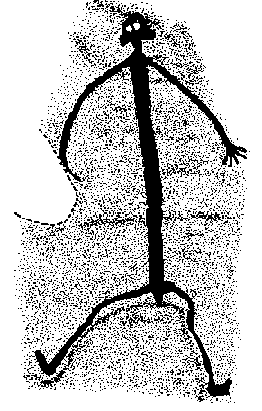 Quinkan is the spirit from the Dreamtime And Aboriginal spirit, especially as depicted on rock paintings in Queensland living in the rocks around Jowelbinna. Quinkan has two sides, two distinct beings. There is the long, thin wisp-like Quinkan, rounded head, usually drawn with vertical lines like energy spikes coming out of his head. He's the good Quinkan and lives in small cracks in the rocks. And there's the opposite Quinkan, the bad Quinkan, big and fat and scary Quinkan, who does all kinds of mischief and bad things. Have you ever heard of spirits in your area like Quinkan, who have a good and a bad side? How about the boogieman, which parents say will get children if they go where they aren't supposed to go, or don't do what they're told? Or how about your good angel and bad angel? Good witch, bad witch? Kokopelli's good side and mischievous side? | |
|   | | Invader Zim
Emperor


Posts : 1252
Join date : 2009-09-15
Age : 28
Location : Somewhere in the United States
Characters
Name: Invader Zim
Desc.:
specices: Irken
 |  Subject: Re: The Dreamtime of Aborigines Subject: Re: The Dreamtime of Aborigines  Wed May 26, 2010 6:42 pm Wed May 26, 2010 6:42 pm | |
| LumaLuma  God of Gluttony and Gate-crashing. He started off as a whale who came ashore at Cape Stewart in the guise of a man who knew sacred rituals which he was happy to share. However, when it came to food, he took more than his share, declaring himself sacred so that only he could eat at feasts. Consequently everyone stopped inviting him, but this made no difference as he turned up anyway. He only had to see smoke from a fire and he could time his arrival to perfection. (We all know people like that.) Fed up with eating left-over scraps, LUMALUMA became partial to consuming dead children. That was the final straw and a seething mob set upon him and his two wives with sticks and stones and spears. Like an ancient martyr he took some time to die. Partly because he was as big as a whale, but mostly because he asked them to slow down so he could make sure they understood all his sacred rituals. When they thought he was dead enough, they propped his body against a tree, tied it in place with ropes, and built a shade hut over him using branches. | |
|   | | Sponsored content
 |  Subject: Re: The Dreamtime of Aborigines Subject: Re: The Dreamtime of Aborigines  | |
| |
|   | | | | The Dreamtime of Aborigines |  |
|
| | Permissions in this forum: | You cannot reply to topics in this forum
| |
| |
| |
|
